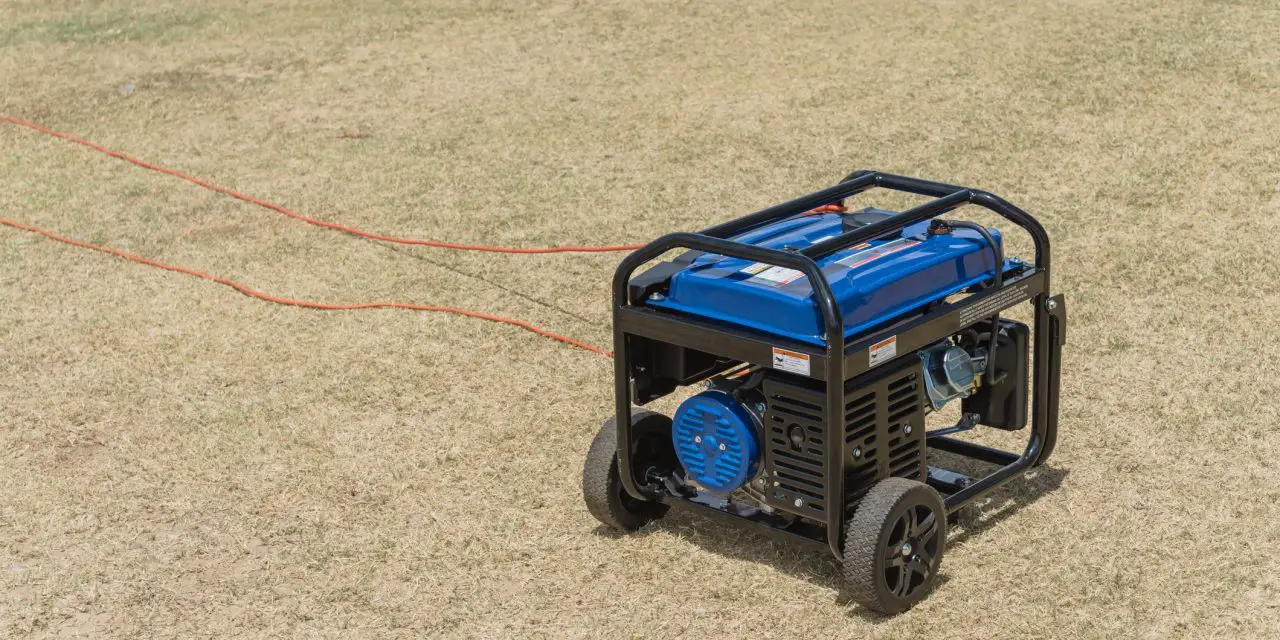A portable generator works by supplying electricity through a dedicated generator cable connected to an inlet box, which then distributes power to the circuits controlled by the switch in a dedicated panel with circuit breakers. During a power outage, the generator provides the necessary electricity to the chosen circuits, ensuring an uninterrupted power supply to your house.
This setup allows for a reliable and convenient way to connect a portable generator to your home and keep essential appliances and systems running during emergencies.
Understanding The Basics
Portable generators are a reliable source of power when electricity is not available. They work by using an internal combustion engine to convert fuel, such as gasoline or propane, into mechanical energy. This energy is then used to rotate a magnet within a coil of wire, generating an electrical current.
The current is then converted to the appropriate voltage and frequency to power electrical devices. Portable generators consist of several components, including the engine, alternator, fuel system, and control panel. The engine is responsible for producing mechanical energy, while the alternator converts this energy into electricity.
The fuel system supplies the fuel needed for the engine to operate, and the control panel allows the user to start and stop the generator and monitor its performance. Understanding these basics is essential for safely and effectively using a portable generator.
Power Generation Process
Circuit breakers in a dedicated panel controlled by the switch distribute electricity to the circuits chosen at installation. During an outage, the portable generator supplies electricity through a dedicated generator cable that connects the generator to an inlet box which feeds power to the switch.
This process allows for a seamless transfer of power from the generator to the house, ensuring that essential appliances and systems continue to function. The fuel combustion and engine operation within the generator power the alternator, which is responsible for generating electricity.
The alternator converts mechanical energy from the engine into electrical energy, which is then distributed throughout the house. By understanding the power generation process of a portable generator, you can harness its capabilities to ensure a reliable backup power source during emergencies or in remote locations.
Power Output And Wattage Calculation
Portable generators work by converting mechanical energy into electrical energy. They typically have an engine that runs on fuel, such as gasoline or propane, which powers a generator that produces electricity. When it comes to determining the power output and wattage of a portable generator, it’s important to consider your specific needs.
Calculating the wattage requirements involves considering the appliances and devices you plan to power. To calculate running watts, you need to determine the power consumption of each device and add them together. Surge watts, on the other hand, refer to the temporary increase in power demand when an appliance starts up.
This surge can be two to three times higher than the running wattage. By calculating both running watts and surge watts, you can choose a generator with the appropriate capacity to meet your power needs. This ensures that your portable generator will work efficiently and provide enough power for your equipment.
Fuel Types And Generators
Portable generators have different fuel options, each with its own pros and cons. Gasoline-powered generators are popular due to their affordability and availability. However, gasoline can be risky to store and has a shorter shelf life. Propane-powered generators are cleaner and quieter, with a longer shelf life for the fuel.
They also produce fewer emissions. However, propane tanks can be heavy and may require additional storage space. Diesel-powered generators offer better fuel efficiency and can run for longer periods. They are also more durable and require less maintenance. However, diesel fuel can be expensive and emits more pollutants.
Choosing the right fuel type for your portable generator depends on your specific needs and circumstances. Consider factors such as fuel availability, storage requirements, emissions, and budget when making your decision.
Safety Considerations
When using a portable generator, safety considerations should be a top priority. Proper placement and ventilation are essential to prevent accidents. It is crucial to place the generator outdoors, away from windows, doors, and vents to avoid the buildup of carbon monoxide.
Adequate ventilation is also necessary to ensure proper airflow and prevent overheating. Additionally, it is essential to have a fire prevention plan in place and keep flammable materials away from the generator. Taking these safety precautions will help protect you and your home while using a portable generator.
Maintenance And Care
Regular maintenance routines are essential for ensuring the optimal performance of a portable generator. It is important to follow recommended maintenance schedules provided by the manufacturer. This includes regularly checking the oil level and changing it as needed, inspecting the spark plugs for wear and replacing them if necessary, cleaning the air filter, and tightening any loose connections.
Additionally, storage and winterizing tips should be followed to protect the generator during periods of non-use or extreme weather conditions. This may include draining the fuel and running the generator until it is completely empty, removing the battery and storing it in a dry place, and keeping the generator covered to prevent dust and debris from accumulating.
Proper maintenance and care will extend the lifespan of the portable generator and ensure its reliable operation in times of need.
Connecting A Portable Generator To The House
Portable generators can be safely connected to a house using transfer switches and electrical panels. The process involves circuit breakers in a dedicated panel controlled by the switch, which distributes electricity to the chosen circuits. During a power outage, the portable generator supplies electricity through a dedicated generator cable.
This cable connects the generator to an inlet box, which then feeds power to the switch. It’s important to follow a step-by-step guide to ensure a safe connection. By properly connecting a portable generator to the house, you can have access to backup power when needed.
This is especially useful in emergency situations or when living in areas prone to frequent power outages. It’s crucial to prioritize safety and adhere to guidelines to avoid any electrical hazards.
Troubleshooting And Common Issues
Troubleshooting and Common Issues: Identifying and resolving generator problems. Frequently encountered issues and their solutions include starting problems, low power output, engine stalling, and fuel leakage. If your generator fails to start, check the fuel level, spark plug, and battery.
In case of low power output, ensure that the generator is not overloaded and that the appliances are compatible with the generator’s wattage. Engine stalling can be caused by a dirty fuel filter or carburetor, so cleaning or replacing these components may solve the issue.
Fuel leakage can be due to a loose or damaged fuel line, which should be tightened or replaced immediately. By addressing these common generator issues promptly, you can ensure the smooth and efficient operation of your portable generator.
Frequently Asked Questions For How Does A Portable Generator Work?
How Does A Portable Generator Connect To Your House?
A portable generator connects to your house through a dedicated generator cable that connects to an inlet box, which then feeds power to a switch controlled by circuit breakers in a separate panel. This allows the generator to supply electricity to selected circuits during a power outage.
How Long Can A Portable Generator Power A House?
A portable generator can power a house for a specific duration depending on its capacity.
What Are The Disadvantages Of A Portable Generator?
Portable generators have a few disadvantages. They can be noisy, emit exhaust fumes, require regular fuel refills, and have limited power capacity.
Conclusion
Portable generators are versatile and reliable power sources that can be used in a variety of situations. Understanding how they work is essential for proper usage and maintenance. In this blog post, we explored the inner workings of a portable generator, from the engine to the alternator and the role of fuel.
We learned that these generators produce electricity through the conversion of mechanical energy into electrical energy, providing power for various appliances and devices. Additionally, we discussed the importance of regular maintenance and safety precautions when using a portable generator. By following these guidelines, users can enjoy the benefits of portable power while ensuring their generator operates efficiently and safely.
Whether you need backup power during emergencies or a reliable energy source for outdoor activities, a portable generator can be an invaluable tool.



















